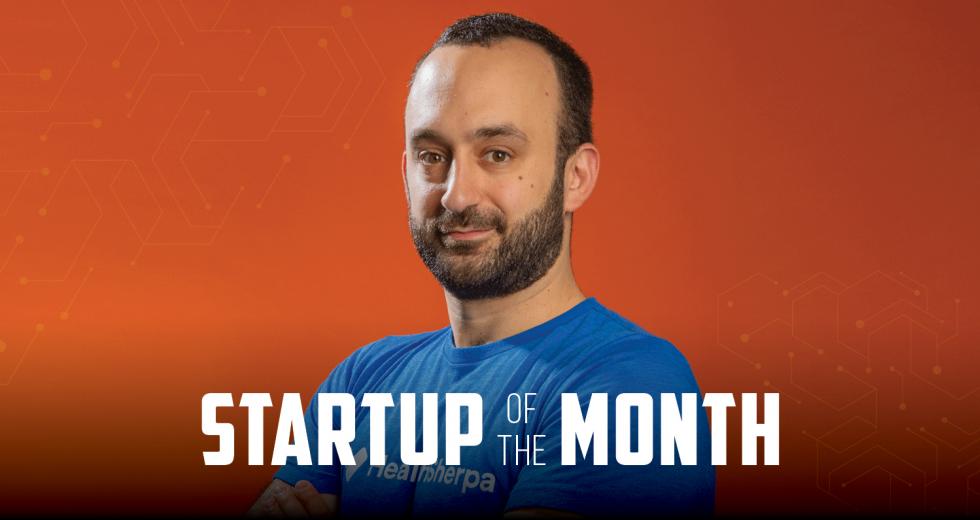When HealthCare.gov — the Affordable Care Act’s health insurance exchange website — went live in 2013, it was slow, buggy and hard to navigate — a digital mess. Two weeks later, three programmers in the Bay Area launched HealthSherpa.com, an alternative website to help online shoppers understand their options under the ACA and see plans and prices quickly.
Founded by George Kalogeropoulos, Ning Liang and Cat Perez, HealthSherpa was created to help guide customers (like a Sherpa guides hikers in the Himalayas) along the rough terrain of health insurance coverage. Its primary customers are large companies, insurance agents and nonprofits who use the website to help part-time employees see what they qualify for and get health coverage; enroll clients; and assist the people they serve. Since 2014, HealthSherpa has enrolled 1.8 million online shoppers (with the most recent enrollment bringing in more than 500,000 customers), and the company is now based in Sacramento.
“All of these people need a way to do ACA enrollment,” says Kalogeropoulos, the CEO. “They need a customized version of HealthCare.gov geared towards their specific needs. We provide that, in effect building the ‘last mile’ to coverage for these audiences.”
The road to HealthSherpa began in 2012. That summer, Kalogeropoulos and Liang went through Y Combinator, the Silicon Valley startup accelerator, to create a business that predicted rent prices in a given market. But they learned real estate investors didn’t care for statistical models, so Kalogeropoulos and Liang asked themselves: What other large industries lacked price transparency?
In 2013, the federal government started to release data on what hospitals were charging the federal government (the list price) and what the federal government was paying them (the reimbursement rate). Kalogeropoulos and Liang took that data and made it easy to search online through a comparison tool called OpsCost. The positive response inspired them to try to turn OpsCost into a business. Neither hospitals nor insurers would disclose their rates, Kalogeropoulos says, but they were willing to pay for that data about other hospitals and insurers.
“The real value of OpsCost was that it showed us that there was valuable data locked up in government spreadsheets, and that we could easily create value by making it easy to search the data in those spreadsheets online,” Kalogeropoulos says. “That’s really all the first version of HealthSherpa was.”
Kalogeropoulos compares HealthSherpa to tax software in the sense that people choose to file taxes with TurboTax or H&R Block (instead of the IRS e-file system) because they’re more user-friendly. Two years ago, the HealthSherpa team moved its Bay Area headquarters to Sacramento for the livability and talent pool, he says. There are 30 full-timers now, and another 25-30 seasonal employees come aboard during open enrollment periods.
In December 2018, HealthSherpa announced it was the first company approved to utilize the Department of Health and Human Services’ new Enhanced Direct Enrollment technology. This allows private companies to handle all enrollment and related health-coverage activities. With annual revenues in the mid-seven figures, Kalogeropoulos says the team isn’t looking to raise funds anytime soon. Kapor Capital, the venture capital investment arm of the Kapor Center in Oakland, is one of HealthSherpa’s investors.
“As an investor, I’m astounded by their growth,” says Uriridiakoghene “Ulili” Onovakpuri, a partner at Kapor Capital, who focuses on portfolio companies in the digital health and medtech space. “I’m excited that, thanks to them, people have health insurance who weren’t previously covered, and now they know about their health options.”
Onovakpuri also praises HealthSherpa’s pledge to Kapor Capital’s Founders’ Commitment, which asks new portfolio companies to commit to having a team that reflects the diversity of its customers. Perez, a HealthSherpa cofounder, reiterates that the ACA was established to address racial disparities and inequalities related to health care, so it only makes sense for the startup to prioritize inclusive products and a diverse team.
“How can leadership and businesses design and build the best solutions for their markets if they don’t have anyone on their teams with the lived experiences to reflect the needs of the market?” Perez says.
Initiatives at HealthSherpa include anonymous surveys to measure workplace inclusion, gender-neutral restrooms, a diversity and inclusion library, and making sure at least one woman is involved in the interview process. These efforts have been in effect for the past few years, although the founders weren’t sure if the company would even exist after the 2016 presidential election.
“When the current administration was elected, we all looked at each other and said, ‘Well, good try everybody, let’s pack it up and go home,’ ” Kalogeropoulos says, noting how the Trump administration was promising to repeal the ACA.
But he says the Department of Health and Human Services has been working hard to make Healthcare.gov work well. As a result, HealthSherpa has reaped the benefits of the government making it easier to do marketplace enrollment.
“Two years ago, if you had told me the Trump administration would be very helpful for an Obamacare startup, I never would’ve believed you,” Kalogeropoulos says, “but here we are.”



